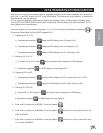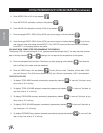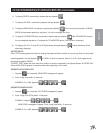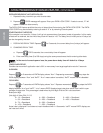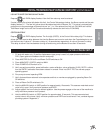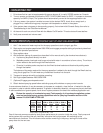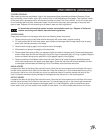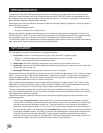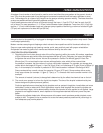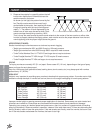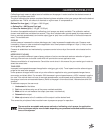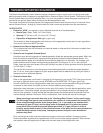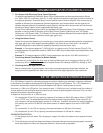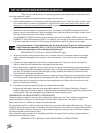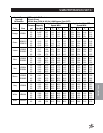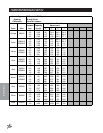
25
Spraying Procedures
HOSE & HANDGUN SPRAYING
A handgun (hand-nozzle or hand-lance) is used to control and direct the spray pattern to the ground, shrub or
tree. They must be constructed of long lasting and noncorrosive materials such as brass, stainless or alumi-
num. The handgun fits to a hose of any length from the sprayer allowing operator mobility. The hose should be
as short as possible while still permitting operator mobility.
Liquid looses pressure due to friction as it travels through the hose, 1-3 psi (0.07-0.21 bar) for each foot (30
cm) of hose. For most operations
1
/2" (1.25 cm) inside diameter hose is adequate. Trees over 40 ft (12 m) high
require
3
/4" (2 cm) inside diameter hose and a sprayer pump capable of delivering a volume of at least 20 gpm
(75 lpm) and a pressure of at least 400 psi (28 bar).
NOZZLES
Always be alert to the possibility of a plugged or damaged nozzles. Serious misapplications may result. Check
nozzle output periodically.
Modern nozzles use spring and diaphragm check valves to insure positive cutoff of chemicals without drip.
Snap-on caps make replacing and cleaning nozzles, quick, easy and fool proof with proper reinstallation.
An operator can see at a glance if all nozzles are the same size by the color code.
3 FUNCTIONS FOR A SPRAY BOOM NOZZLE
1. Regulating the flow is done through size of the orifice (opening) within the nozzle. All nozzles, regardless
of type, have some point within them that regulates the flow of liquid. Obviously, the larger the opening
the greater the rate of flow volume. Volume is expressed in Gallons Per Minute (gpm) or Liters Per
Minute (lpm). Do not confuse the term volume with application rate, which will be covered later.
As pressure increases, the flow volume in a given nozzle also increases. For example, an average size
nozzle which discharges 0.52 gpm (1.4 lpm) at 30 psi (2 bar), will discharge 0.73 gpm (2 lpm) at 60 psi (4
bar). In this example, an increase in pressure of 100% has caused an increase in discharge of 40%.
Some nozzles deliver a small volume (for example: 0.2 gpm (0.75 lpm)). Some nozzles deliver a rela-
tively large volume (for example: 1.5 gpm (5.7 lpm)), or 7
1
/2 times as much as the smaller nozzle in this
example.
The amount of material (volume) to be applied is determined by the effect the chemical has on the turf.
2. The nozzle on a sprayer is to form the liquid into droplets. The size of the droplet is determined by two
factors design and system pressure (psi/bar).
Particular applications are done best by big droplets such as systemic fungicides, insecticides and some
herbicides in order to reduce drift. Other applications require small droplets like contact fungicides and
some herbicides. Again, this is determined by whether the chemical is foliar applied or soil applied. Large
droplets for soil applied material, small droplets for foliar applied materials that evenly cover the plant
better.
Pressure also affects droplet size. More pressure at the same nozzle produces smaller droplets, more
subject to drift. The general rule on pressure is to use the lowest pressure possible with just enough to
form adequate spray nozzle patterns.



